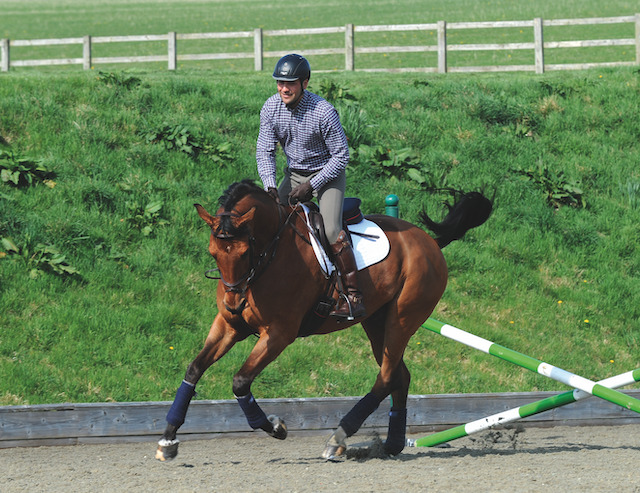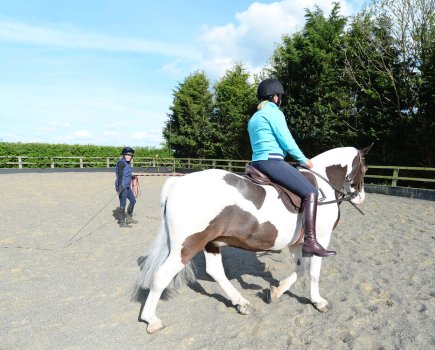International showjumper and young horse producer Jay Halim explains how to get the best out of a fresh horse in a 30-minute jumping session.
If you have a horse who gets excited about jumping, you need time to work them in properly on the flat first. I always make sure my horses are suitably warmed up and have had a chance to get rid of any extra fizz. Then it’s about giving them things to think about and do with their legs, so they don’t have time to be silly.
These are three exercises that I use at home:
Exercise 1 – let off steam
If your horse is overly fresh, spending ten minutes letting him burn off some steam on the lunge before you climb aboard is far better than spending ten minutes trying not to be bucked off.
- I use a training aid when lungeing to give horses a contact to work into. I use a ReinRite which stops them ducking behind the vertical. I want them to accept the bridle and work with a lower neck; if they are mucking around and chucking their heads in the air they are hollowing their backs.
- I do lots of transitions from trot to canter and canter to trot to get them listening and not bombing around.
- The first time they canter, there’s a chance they’ll explode, but keep them on a circle and eventually they’ll settle.
- When you climb on board, spend a few minutes doing lots of changing of the rein and exaggerate your new inside leg each time to get your leg on. Fresh horses can sometimes be overly reactive to the leg.
Exercise 2 — lengthen and shorten
Before you start jumping, you must be able to lengthen and shorten the canter because it also helps to get the rider’s leg on the horse. It’s important that your horse has accepted your leg before you start jumping.
- Once you’ve cantered large, ride on and back on the long side, increasing the strides using your leg and seat to push the horse on, and then shortening the strides by sitting up and using half-halts.
- You can also mix it up a bit, so steady your horse on the long side and extend on the short side. Use a circle to help steady the horse after the lengthened strides if they get excited.
- You can also put two poles, one at either end of the long side, on a six-stride distance and practise counting the strides between them — decreasing the strides one time and increasing the next.
- Another good way of getting your leg on is riding a few strides of leg-yield away and to the track from the ¾ line. You want your horse to be responsive to your hand and leg aids, stay straight through his body and maintain a good rhythm. He should move his barrel away from your inside leg, not just his neck or hindquarters.
Exercise 3 — jumping on a curve
Jumping exercises on a curve or circle are brilliant for keeping a horse’s focus when you start jumping, and they work the horse equally on both sides.
- I set out five canter poles spaced three yards on a gentle curve so it’s not too tight until the horse is cantering in a rhythm as if the poles aren’t there.
- You can then raise some of the poles into fences. I start with putting the middle one up as a jump with two take-off poles and two landing poles. You can then build the number of jumps and the height depending on the horse’s experience.
- Having to negotiate poles before and after the fences will make your horse sit back and listen rather than rush and become unbalanced. It’s hard work for the horse so be careful not to over-do it.
Top tip!
Don’t go straight to jumping doubles if your horse is still fresh because they jump through them too fast and flat, and it can make them more excited. Wait until they’ve calmed down.









